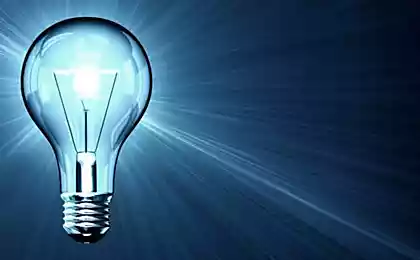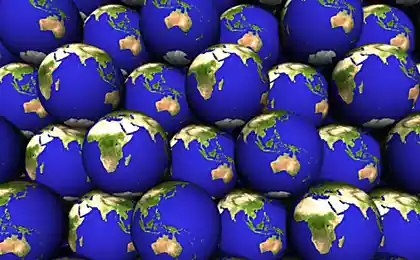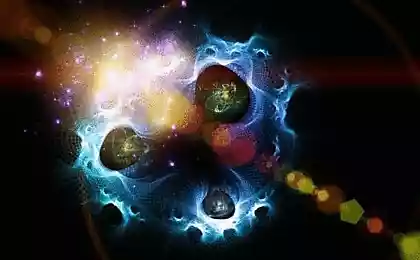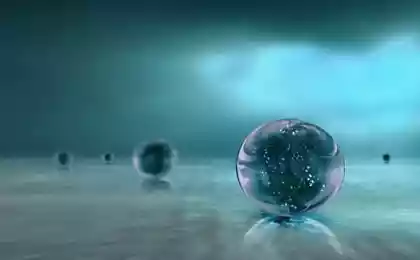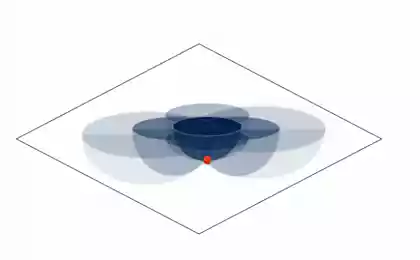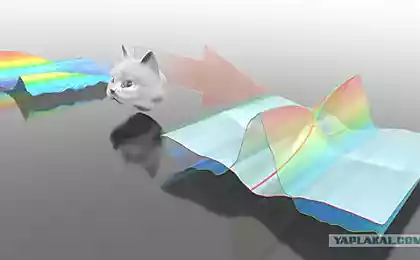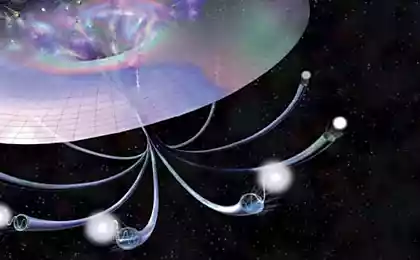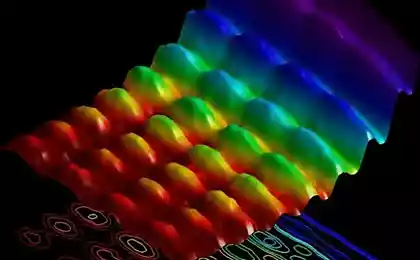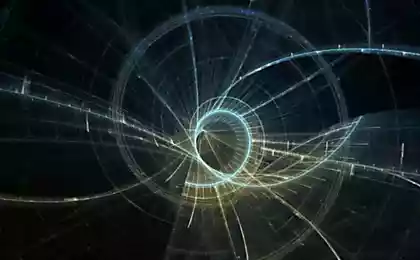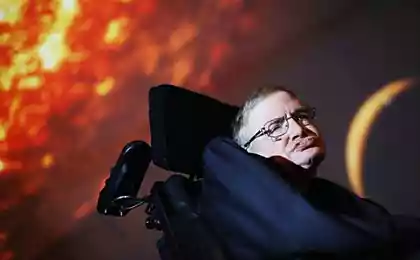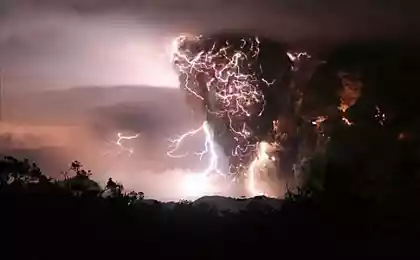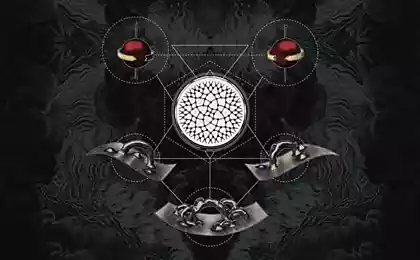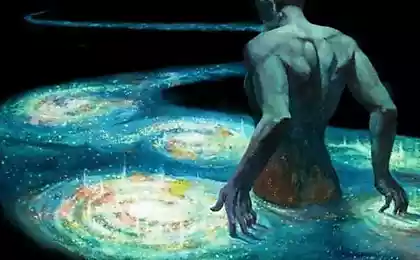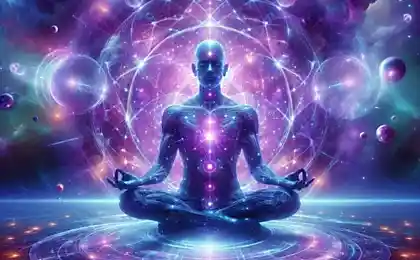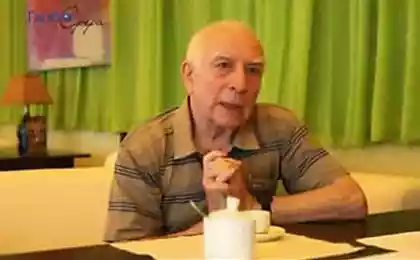962
10 unusual phenomena, thought experiments and paradoxes of quantum mechanics
July 1 in Russia for the first time managed to produce a measurement of qubits (quantum bits) capable, unlike conventional bits, which are characterized by two states a "one" or "zero" - to take an infinite number of states. The result has been experimentally confirmed the possibility of a qubit in a superposition of two states at the same time, from the point of view of quantum mechanics close to the paradox. We offer you a selection of ten more unusual phenomena of quantum mechanics.
1. Cat Shrёdingera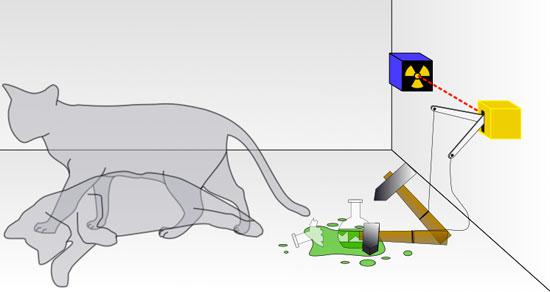
In 1935 the physicist Erwin Schrödinger conducted a thought experiment, later called "Schrödinger's cat" - put forward the theory that he served as the subject of extensive discussion in the scientific community, and is now used in quantum computing and quantum cryptography.
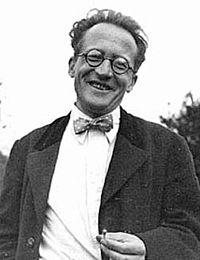
Schrödinger set out to prove that, by observing the macroscopic systems arising in such cases, the uncertainty can be avoided by carrying out direct observation of the object. A summary of its conclusions as follows: a certain cat should be placed in a sealed box with inside the infernal machine, which under certain conditions emit prussic gas toxic to living organisms. In the same box is a very small amount of radioactive material, and a single atom can either decay within the next hour or the same degree of probability do not disintegrate.
If at this time does not make any direct observations, that is not to open the box with the cat, it can be assumed that the cat all the time can both stay alive and die. Accordingly, the experiment is not yet confirmed, the cat remains both alive and dead - as long as we do not open the box and see the result.
The bottom line is that in nature this does not happen, and this applies to both living organisms and atoms - the core can be either collapsed, or broken up, and the intermediate state is impossible. However, direct observation of the atom and the cat are in the state, called superposition, - in other words, in two states at the same time.
2. The paradox Kleyna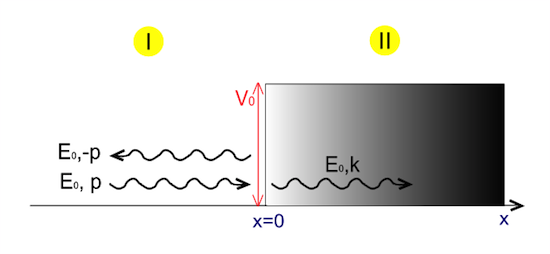
Imagine the problem: you must move the relativistic particle through a potential barrier, and the potential energy of the particle is less than the barrier height - in other words, the energy to overcome the barrier by standard particle is not enough. From the point of view of classical mechanics is such a thing is not possible, however, according to quantum mechanics, a particle can still overcome the barrier.
More precisely, it is not so: the fact that the involvement of a certain energy in the strong field of the second birth happens, steam particles and antiparticles, which occurs just on the other side of the barrier.
3. Quantum paradox Zenona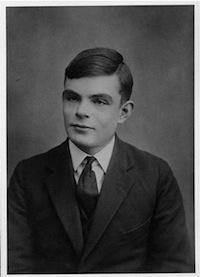
If you constantly monitor the fragile quantum particles, it can never fall apart, in other words, observing the particle, we somehow make a difference in her condition, for example, tells her energy or an additional impetus: the more stable state of the particle, the more it is likely to fall apart.
The first effect is described by Alan Turing back in 1957, the year, but in practice this phenomenon is able to observe only in 1989 - an experiment conducted by David Vineland: as soon as the atoms exposed to the ultraviolet radiation of the transition to the two-level (excited) state repressed.
4. Wave-dualizm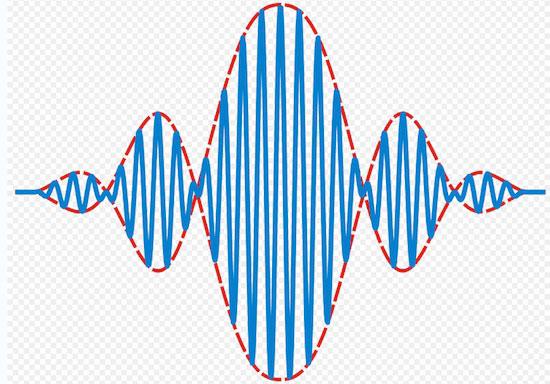
The principle of this concept is that the object can be simultaneously as wave properties and particle, for example, light is a wave certain length, in many cases exhibit electromagnetic properties, but just as much light can be represented in the form of elementary particles - photons that is, light shows and corpuscular properties.
From the point of view of physics, this routine is not logical, but in quantum physics, this situation is acceptable and, moreover, in the case of light and wave properties are mutually complementary.
Now the wave-particle duality for the most part the subject of theoretical interest, since the quantum objects are neither particles nor waves in the classical sense.
5. Quantum zaputannost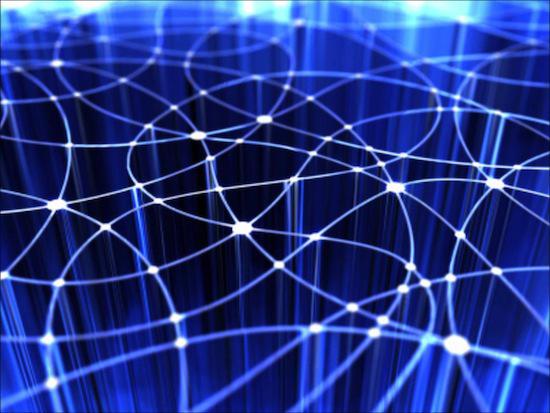
The principle of quantum entanglement is the interaction that only a single particle of a certain group of particles changes the status of not only the object, which is directly affected, but all the other objects in this group. Therefore, the objects are interrelated, and their relationship remains constant, even when they are located at a considerable distance from each other, or in completely different conditions.
For example, take a pair of photons in an entangled state: if you change the first photon helicity spin from positive to negative, the second photon helicity will always be negative. If we again change the first photon helicity of the negative, the second photon will acquire a positive helicity.
6. Quantum teleportatsiya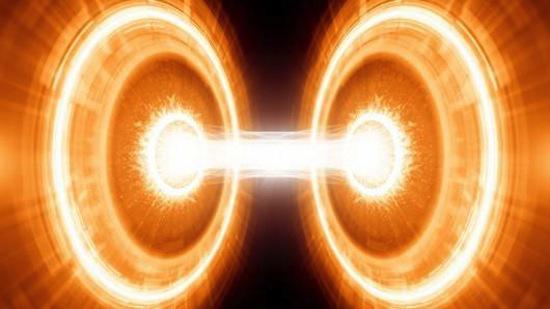
Teleportation of quantum mechanics differs significantly from the teleportation described in works of fiction - with quantum teleportation can not pass a certain distance of energy or matter. In this case, the state passed a quantum particle in the presence of another, entangled particles: at the transfer point is the state is destroyed, and at the reception - is recreated.
Note that the particles are not destroyed, but only their condition at the time of sending / receiving - it is not a transfer in the strict sense, but rather up. Transmission is not the quantum channel, and by the usual, and can not be faster than the speed of light.
7. Sverhtekuchest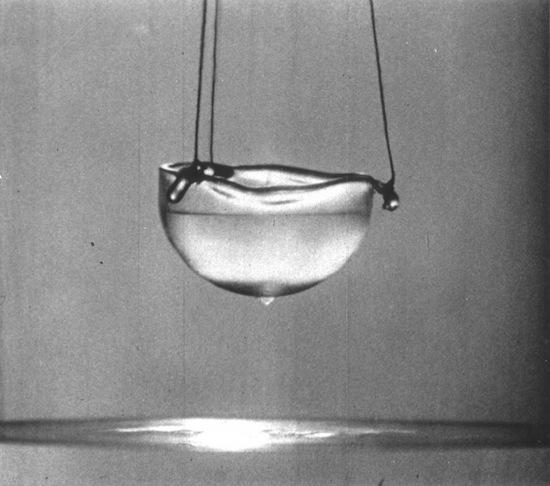
If the temperature of the substance in the state of a quantum liquid cooled to near absolute zero, the substance will acquire the ability to flow through the narrow channels such as, for example, capillaries, without friction.
Scientific substantiation of such phenomena: atoms of matter in a state of quantum fluid (eg, a form often takes the helium-3) - bosons, and in terms of quantum mechanics, any number of its particles can be in the same state. The closer the temperature of absolute zero, the greater the number of atoms is in the same energy state, and ultra-low temperature energy of the collision can be very small, so that the energy dissipation in the gaps between the atoms will not happen - because the energy is not dissipated, then the friction will not.
Until recently it was thought that such a state is characteristic only for liquid helium, but not so long ago it was found that it is inherent and solid helium, and other substances, which are based bosons, the temperature is close to absolute zero.
8. Sverhprovodimost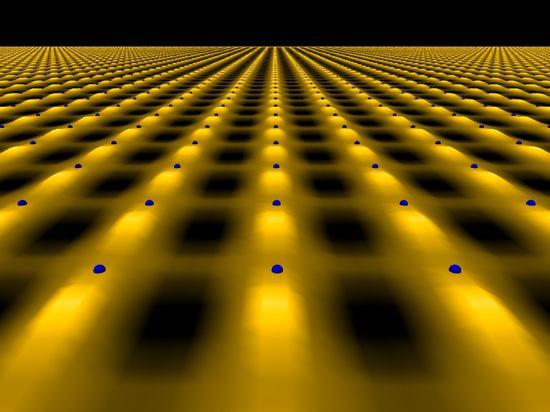
Superconductivity - quantum effect, wherein the electrical resistance of the particles is zero at the critical temperature (close to absolute zero), in other words, an electric current is passed through such material, practically no resistance.
The phenomenon has been widely practical applications: in particular, there are the so-called superconductors - usually ceramic, and they include liquid nitrogen, whose temperature is - 77 ° K.
9. Theorem ban klonirovaniyaSoglasno quantum theory, creating an exact copy of any unknown quantum state is impossible. Cloning in the classical sense is an exact copy, but in quantum mechanics by cloning involves the creation of a state consisting of several initial states of two or more groups of particles.
As you know, a group of particles can be linked to each other and the energy between them can be interconnected. However, to convey the energy state with absolute certainty from one group to another is not possible, since it is contrary to the principles of quantum entanglement, but the establishment is not completely identical copies still possible.
10. The paradox of Einstein - Podolsky - Rozena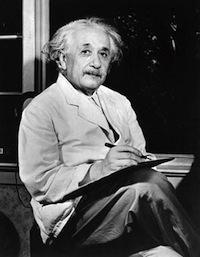
This paradox suggests that the laws of quantum mechanics are currently incomplete and eventually need to be supplemented.
Imagine that two particles are simultaneously formed after the collapse of the initial particle, according to the law of conservation of momentum, the total momentum of the resulting particles must be equal to the initial momentum of the particle. Therefore, we can measure the momentum of a particle formed by a simple formula to calculate the momentum of the second particle, formed simultaneously with it. Then we are able to measure the momentum of the second particle, which we have calculated, and thus get to her values of two variables are measured at the same time it is impossible according to the laws of quantum mechanics.
via factroom.ru
1. Cat Shrёdingera

In 1935 the physicist Erwin Schrödinger conducted a thought experiment, later called "Schrödinger's cat" - put forward the theory that he served as the subject of extensive discussion in the scientific community, and is now used in quantum computing and quantum cryptography.

Schrödinger set out to prove that, by observing the macroscopic systems arising in such cases, the uncertainty can be avoided by carrying out direct observation of the object. A summary of its conclusions as follows: a certain cat should be placed in a sealed box with inside the infernal machine, which under certain conditions emit prussic gas toxic to living organisms. In the same box is a very small amount of radioactive material, and a single atom can either decay within the next hour or the same degree of probability do not disintegrate.
If at this time does not make any direct observations, that is not to open the box with the cat, it can be assumed that the cat all the time can both stay alive and die. Accordingly, the experiment is not yet confirmed, the cat remains both alive and dead - as long as we do not open the box and see the result.
The bottom line is that in nature this does not happen, and this applies to both living organisms and atoms - the core can be either collapsed, or broken up, and the intermediate state is impossible. However, direct observation of the atom and the cat are in the state, called superposition, - in other words, in two states at the same time.
2. The paradox Kleyna

Imagine the problem: you must move the relativistic particle through a potential barrier, and the potential energy of the particle is less than the barrier height - in other words, the energy to overcome the barrier by standard particle is not enough. From the point of view of classical mechanics is such a thing is not possible, however, according to quantum mechanics, a particle can still overcome the barrier.
More precisely, it is not so: the fact that the involvement of a certain energy in the strong field of the second birth happens, steam particles and antiparticles, which occurs just on the other side of the barrier.
3. Quantum paradox Zenona

If you constantly monitor the fragile quantum particles, it can never fall apart, in other words, observing the particle, we somehow make a difference in her condition, for example, tells her energy or an additional impetus: the more stable state of the particle, the more it is likely to fall apart.
The first effect is described by Alan Turing back in 1957, the year, but in practice this phenomenon is able to observe only in 1989 - an experiment conducted by David Vineland: as soon as the atoms exposed to the ultraviolet radiation of the transition to the two-level (excited) state repressed.
4. Wave-dualizm

The principle of this concept is that the object can be simultaneously as wave properties and particle, for example, light is a wave certain length, in many cases exhibit electromagnetic properties, but just as much light can be represented in the form of elementary particles - photons that is, light shows and corpuscular properties.
From the point of view of physics, this routine is not logical, but in quantum physics, this situation is acceptable and, moreover, in the case of light and wave properties are mutually complementary.
Now the wave-particle duality for the most part the subject of theoretical interest, since the quantum objects are neither particles nor waves in the classical sense.
5. Quantum zaputannost

The principle of quantum entanglement is the interaction that only a single particle of a certain group of particles changes the status of not only the object, which is directly affected, but all the other objects in this group. Therefore, the objects are interrelated, and their relationship remains constant, even when they are located at a considerable distance from each other, or in completely different conditions.
For example, take a pair of photons in an entangled state: if you change the first photon helicity spin from positive to negative, the second photon helicity will always be negative. If we again change the first photon helicity of the negative, the second photon will acquire a positive helicity.
6. Quantum teleportatsiya

Teleportation of quantum mechanics differs significantly from the teleportation described in works of fiction - with quantum teleportation can not pass a certain distance of energy or matter. In this case, the state passed a quantum particle in the presence of another, entangled particles: at the transfer point is the state is destroyed, and at the reception - is recreated.
Note that the particles are not destroyed, but only their condition at the time of sending / receiving - it is not a transfer in the strict sense, but rather up. Transmission is not the quantum channel, and by the usual, and can not be faster than the speed of light.
7. Sverhtekuchest

If the temperature of the substance in the state of a quantum liquid cooled to near absolute zero, the substance will acquire the ability to flow through the narrow channels such as, for example, capillaries, without friction.
Scientific substantiation of such phenomena: atoms of matter in a state of quantum fluid (eg, a form often takes the helium-3) - bosons, and in terms of quantum mechanics, any number of its particles can be in the same state. The closer the temperature of absolute zero, the greater the number of atoms is in the same energy state, and ultra-low temperature energy of the collision can be very small, so that the energy dissipation in the gaps between the atoms will not happen - because the energy is not dissipated, then the friction will not.
Until recently it was thought that such a state is characteristic only for liquid helium, but not so long ago it was found that it is inherent and solid helium, and other substances, which are based bosons, the temperature is close to absolute zero.
8. Sverhprovodimost

Superconductivity - quantum effect, wherein the electrical resistance of the particles is zero at the critical temperature (close to absolute zero), in other words, an electric current is passed through such material, practically no resistance.
The phenomenon has been widely practical applications: in particular, there are the so-called superconductors - usually ceramic, and they include liquid nitrogen, whose temperature is - 77 ° K.
9. Theorem ban klonirovaniyaSoglasno quantum theory, creating an exact copy of any unknown quantum state is impossible. Cloning in the classical sense is an exact copy, but in quantum mechanics by cloning involves the creation of a state consisting of several initial states of two or more groups of particles.
As you know, a group of particles can be linked to each other and the energy between them can be interconnected. However, to convey the energy state with absolute certainty from one group to another is not possible, since it is contrary to the principles of quantum entanglement, but the establishment is not completely identical copies still possible.
10. The paradox of Einstein - Podolsky - Rozena

This paradox suggests that the laws of quantum mechanics are currently incomplete and eventually need to be supplemented.
Imagine that two particles are simultaneously formed after the collapse of the initial particle, according to the law of conservation of momentum, the total momentum of the resulting particles must be equal to the initial momentum of the particle. Therefore, we can measure the momentum of a particle formed by a simple formula to calculate the momentum of the second particle, formed simultaneously with it. Then we are able to measure the momentum of the second particle, which we have calculated, and thus get to her values of two variables are measured at the same time it is impossible according to the laws of quantum mechanics.
via factroom.ru
